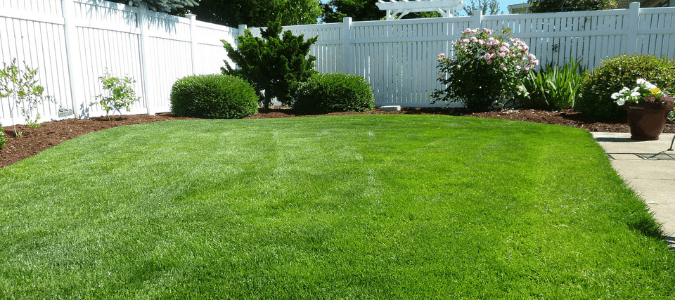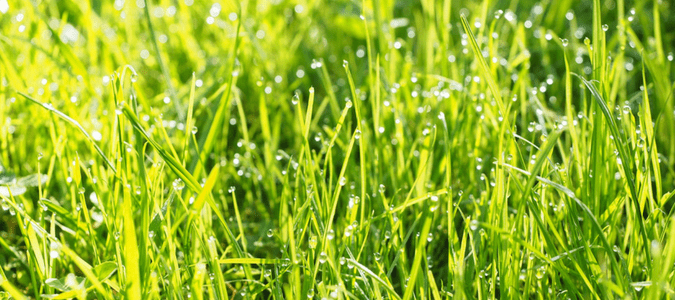Keeping your lawn looking its best isn’t always easy, but it can be rewarding. Periodic dethatching and aeration are beneficial treatments for keeping your lawn green, healthy and beautiful.
Dethatching removes built-up dead grass blades and organic matter that resides on the soil surface below the green, creating a barrier. This barrier inhibits water, nutrients and air from getting into the soil to reach the root zone. Dethatching slices this barrier and allows that debris to be removed.
Aerating, on the other hand, helps to break up compacted soil, removes built-up layers of organic matter and introduces pathways for air, water and nutrients to reach deeper into the root zone.
What Is Dethatching Grass?
Dethatching your lawn is a helpful step in keeping your lawn healthy and green throughout the year. Dethatching helps remove any built-up debris or organic matter on the surface that may prevent water, air and other nutrients from reaching the grass.
Many homeowners are unaware that an excessive layer of thatch in their lawn can form a barrier blocking out water, oxygen, sunlight and vital nutrients. This barrier of fallen leaves, dead grass and other materials can affect the quality of your soil, and hinder root growth.
However, having some thatch is beneficial. It serves as a natural fertilizer by providing food for living organisms such as earthworms and helpful microbes while also helping maintain the temperature of the soil beneath.
When to Dethatch Grass
Common signs of a lawn needing dethatching include:
- Thinning grass
- Dry spots appearing
- Weeds invading
- A loss of healthy green color
- Poor water into soil penetration
To ensure your grass is properly cared for and prevent any damage, it’s important to avoid dethatching when it’s dehydrated from extreme heat or drought conditions.
If you think it might be time to dethatch your lawn, here’s an easy test: press a ruler or finger into the surface until it reaches the soil. If it’s more than a half inch, your lawn needs to be dethatched.
Having the proper tools at your disposal and using effective techniques is also important.
That said, if you’re not experienced with lawn maintenance or the tools involved, it’s probably best to reach out to a professional for help. A lawn care specialist can assist you in creating an effective lawn care plan.
What Is Aerating?
How Will I Know If Aeration Is Necessary?
If you’re concerned about your grass roots not growing deep, do the “screwdriver test” to quickly determine if soil compaction is an issue.
Simply insert a screwdriver into moist soil. If the screwdriver goes in three or more inches, you’re probably safe from compaction issues, but if not, aeration may be necessary.
This test can be a good indication of the condition of your soil. However, for the most accurate results, you should get a professional lawn care specialist to take a cross-section of your lawn to identify any compaction issues.
When you notice soil that’s hard to the touch, thinning grass and disease, drainage problems, slow grass growth or trees/shrubs showing signs of stress, it’s time to break out the aerator!
Aerate your lawn during the growing season to make recovery fast and efficient. Knowing how to aerate properly is essential. If done incorrectly, you’ll probably just end up doing damage rather than helping your lawn.
What To Do Before Aerating Your Lawn
Before you aerate or dethatch your lawn, mow it to the shortest recommended height for your grass species. Never cut off more than a third of the blade’s length.
Dethatching your lawn helps to quickly remove debris from the area to provide optimal results when aerating. With expert help, you can ensure that this task is completed in no time with superior results every time.
Additionally:
- Avoid excessively wet or muddy conditions prior to aeration.
- If you have clay or compacted soil conditions, aeration before fertilization is highly recommended.
- Top dressing after aeration is also highly recommended to fill the open spaces with a healthy blended soil. This provides optimum growing conditions for new root development.
It’s usually in the homeowner’s best interest to consult with a lawn care expert. They can let you know when you should aerate your lawn and craft a specific, well-adjusted plan to keep your lawn looking lush and green all year round!
Benefits of Hiring a Lawn Expert
While you can certainly aerate your own lawn, it is worth considering the advantages of hiring a professional. They have access to the best tools and equipment for the job. With professional help, you can rest easy knowing that your lawn needs are met in ways that won’t be possible with DIY methods, and you’ll end up with a luscious green lawn.
ABC Can Help Keep Your Grass Green
Lawn aeration can be tricky if you don’t have the right tools and experience, which could lead to damaged grass. Instead of taking that chance, let the professionals at ABC Home & Commercial Services take lawn aeration and dethatching off your plate. We can create a customized lawn service plan that works best for your needs.


